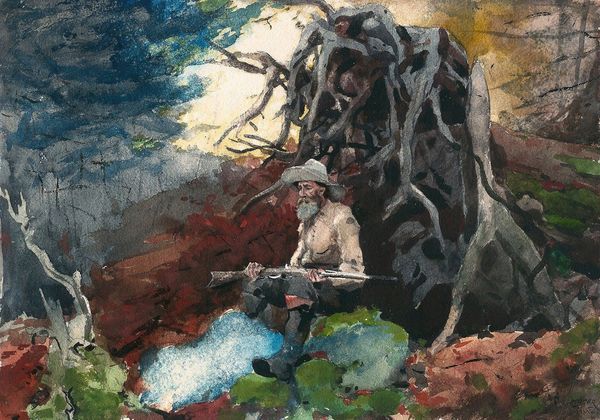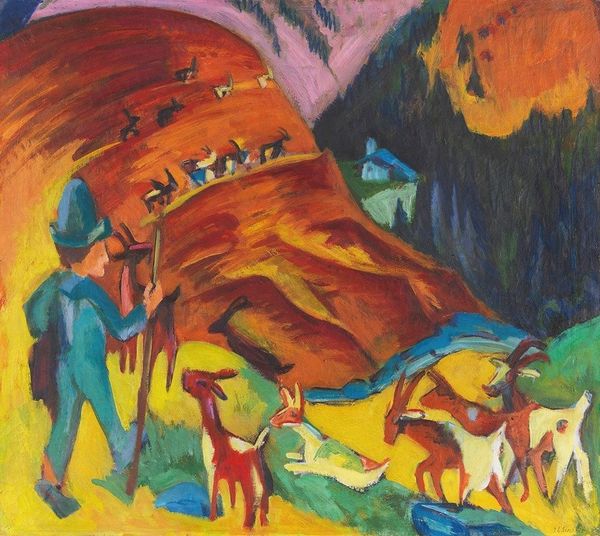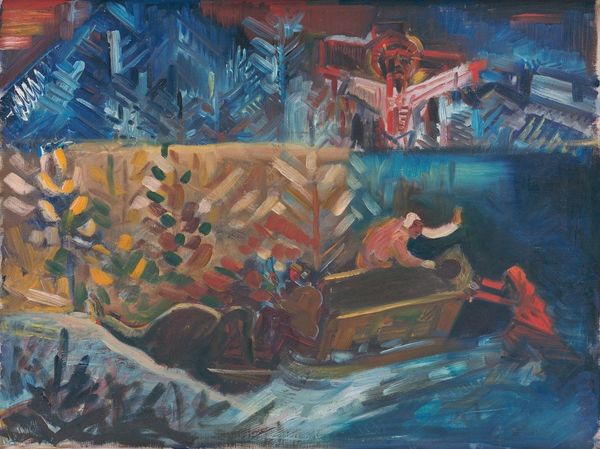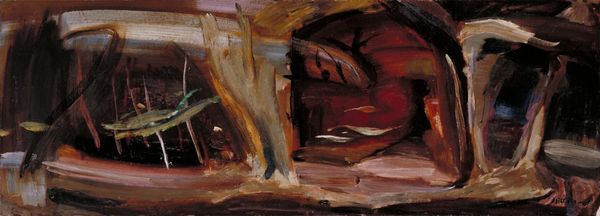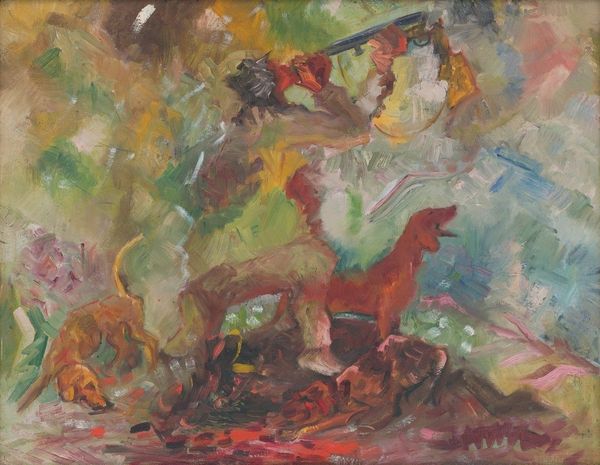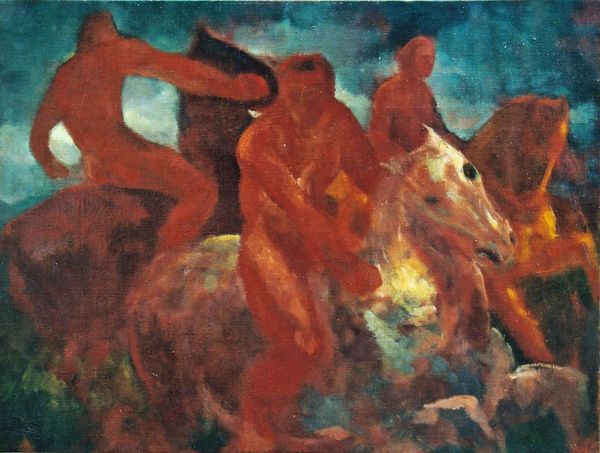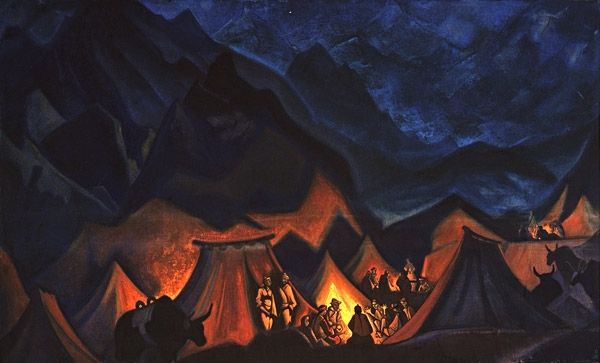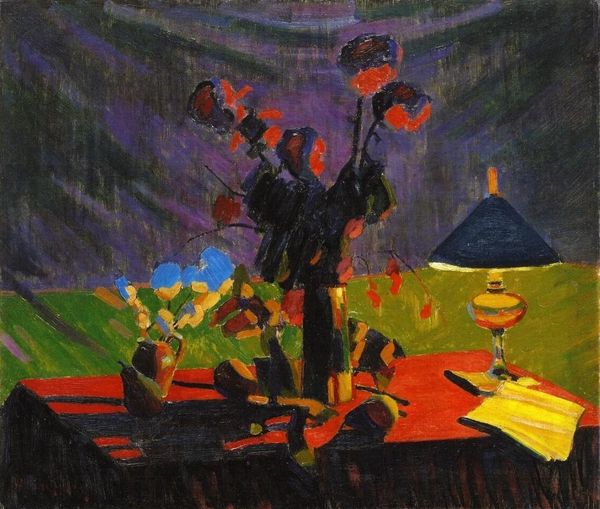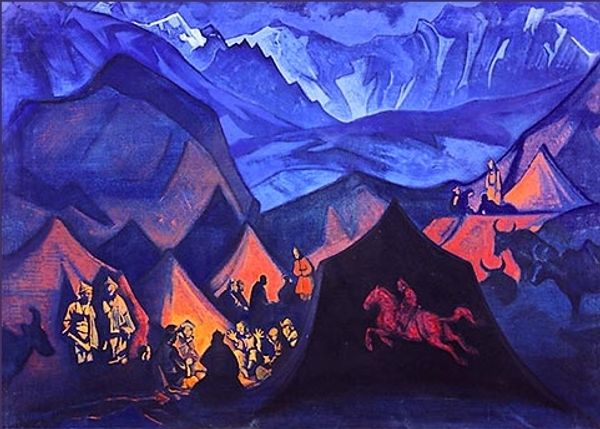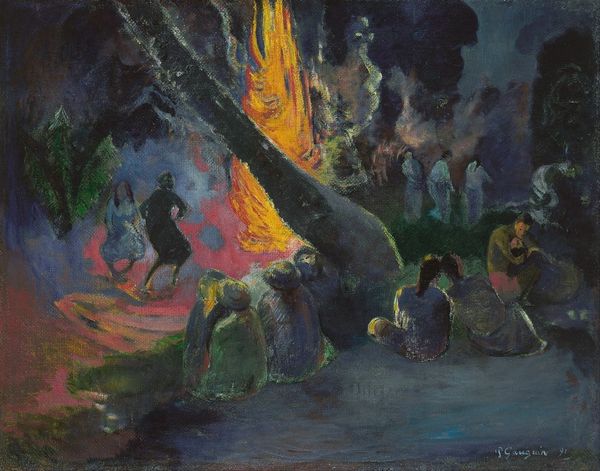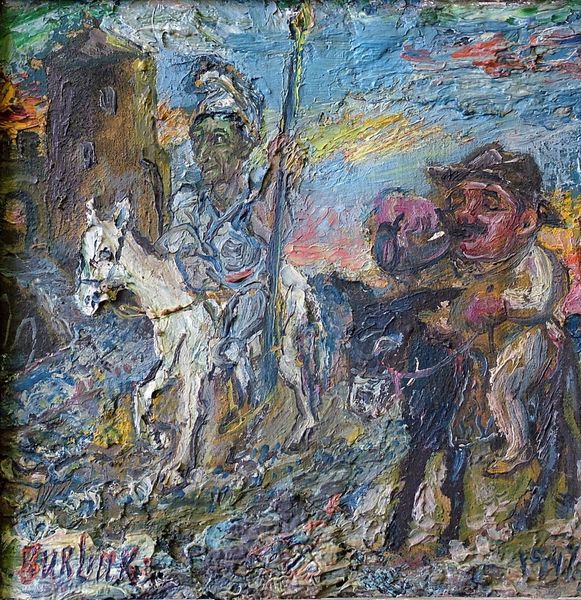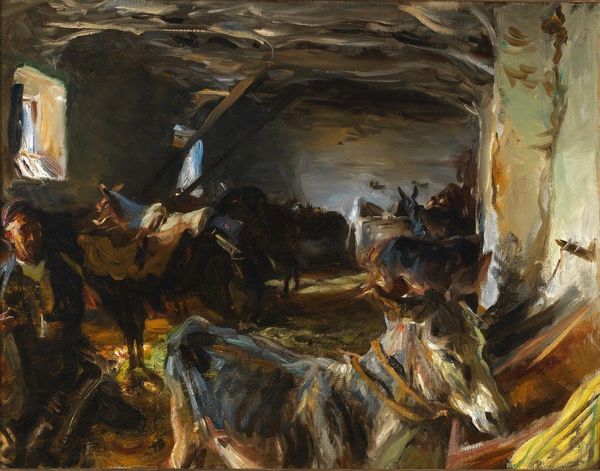
painting, oil-paint
#
narrative-art
#
painting
#
oil-paint
#
landscape
#
figuration
#
oil painting
#
expressionism
#
men
Copyright: Public domain US
Curator: Stepping back, one is struck by the raw emotion emanating from Pyotr Konchalovsky’s "Design for the opera by Wolfgang Amadeus Mozart, 'Don Giovanni'," painted in 1913. Editor: Yes, immediately. It’s like gazing into the abyss. The use of oranges and blues – the fiery backdrop versus the stark figures – feels less like stage design and more like a descent. It gives me a subtle feeling of despair and anxiety. Curator: Opera was often utilized by early 20th-century artists, such as Konchalovsky, who was a figure in the Russian avant-garde. They explored its revolutionary potential to reflect contemporary society and its tensions through theater. You have this collision of elite art, like opera, and radical artistic expression. It can challenge established cultural norms, sometimes leading to censorship or controversies. Editor: It definitely seems intentional here. Konchalovsky paints a boat with two men as if traversing some mythic underworld, it feels like the realm of Hades. One figure, perhaps Don Giovanni himself, sits almost petrified, while another, more animated, seems to be rowing away from the orange light – that beckoning oblivion, I would say. What could it mean when taking it into a broader context? Curator: Contextualizing Konchalovsky's "Don Giovanni," the rise of Expressionism during that period emphasized personal emotion and subjective interpretation. He may have chosen 'Don Giovanni' as a familiar narrative to explore existential themes, connecting with audiences who were already contemplating broader societal issues through artistic conventions and public taste of the time. Editor: It’s as though he extracted the essence of Don Giovanni – the judgment, the final descent – and turned it into a timeless symbol. Perhaps he is depicting something even older than Mozart’s opera and his design gives the opera a timeless layer. It’s the primal fear of accountability that haunts us. The symbolism in the original material, like death or divine retribution, feels almost universal. Curator: Precisely. Looking at his approach as a whole we see Konchalovsky created the oil-paint work with a deep consciousness of the historical context. Editor: For me, this work captures a timeless psychological space more than it illuminates a historical period, I have to say. The cultural anxiety that permeates the artwork goes beyond its origins. Thank you, Konchalovsky, for presenting us a moment to explore art history as a continuous feedback loop.
Comments
No comments
Be the first to comment and join the conversation on the ultimate creative platform.
